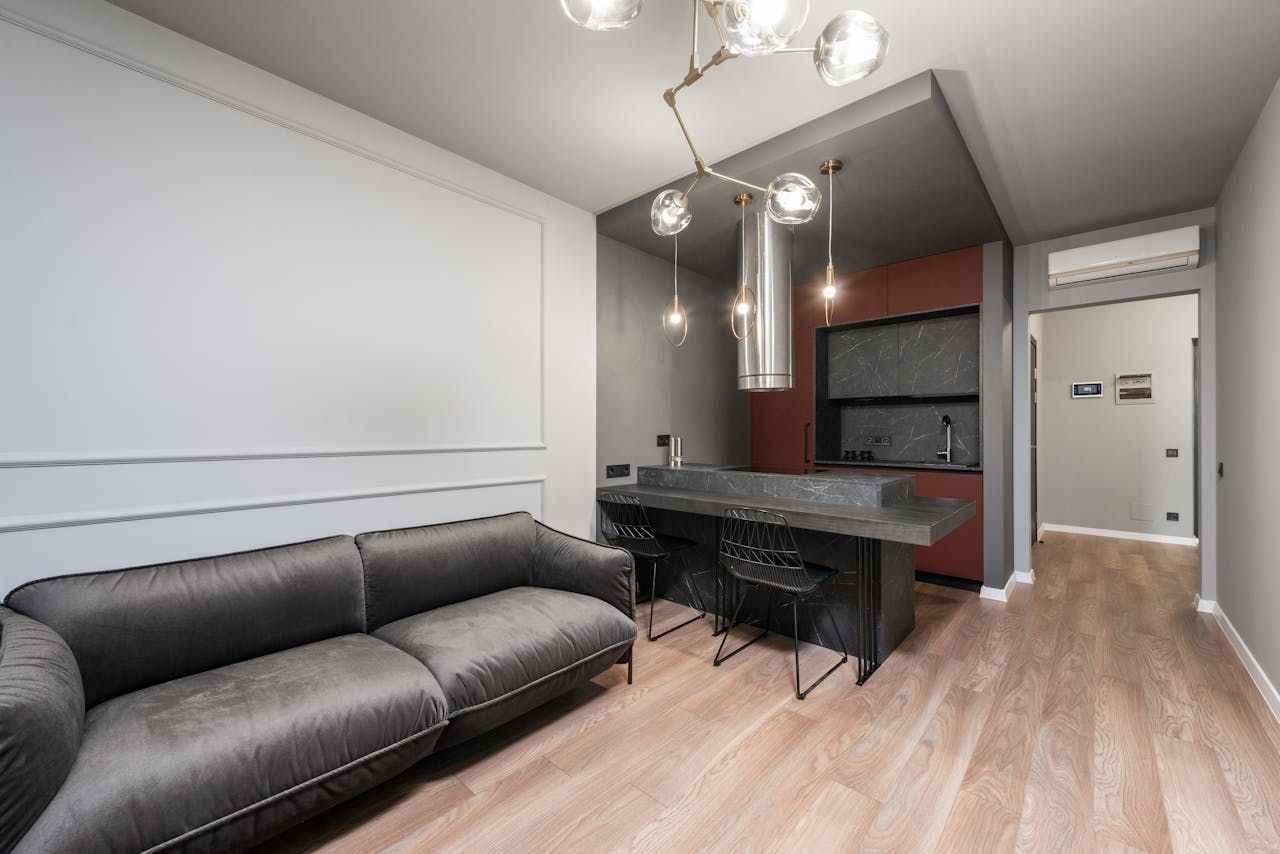Have you ever wondered why, despite eating healthy foods, you still struggle to attain your health goals? The answer might be in how you eat, not what you eat. Mindful eating, or paying full attention to your food as you eat, is often overlooked. It involves savouring every bite, paying attention to the body’s hunger and satiety signals, and choosing meals that nourish the body. This practice can be hampered or enhanced by your eating environment. For this reason, the design and ambiance of your kitchen seating area matter. Let’s delve into how you can create a kitchen space that encourages slower, deliberate, and mindful eating.
The Connection Between Your Kitchen Design and Eating Habits
Before we get into the specifics of designing a kitchen that promotes mindful eating, it’s crucial to understand the connection between your kitchen space and your eating habits.
In the same genre : Can the use of glass jars and see-through containers in the kitchen aid in weight loss?
Your kitchen is more than a space for cooking meals. It’s where you make vital health choices, often unconsciously. The space’s design can influence how much and how quickly you eat. A cluttered, uncomfortable kitchen seating area may push you to eat quickly to leave the unpleasant environment. Conversely, a comfortable, well-designed space can make mealtimes a relaxing experience, allowing you to eat slowly and mindfully.
Embracing Minimalism for Mindful Eating
Minimalism is a design principle that can significantly improve your eating habits. A minimalist kitchen encourages focus on the meal at hand rather than distractions, promoting slower, more mindful eating.
Also read : What are the key features of a slimming-focused kitchen knife set?
Clearing your kitchen seating area of unnecessary items gives you the space to breathe and focus on your meal. A clean, clutter-free table prompts you to be present in the moment, to savour each bite, and therefore, eat more mindfully. Incorporating elements like sleek furniture, neutral colours, and natural light can create a calming atmosphere, enhancing the overall eating experience.
Designing a Kitchen Seating Area that Encourages Interaction
The kitchen is often the heart of the home, a social space where families gather to cook, eat, and spend quality time. Designing a seating area that encourages interaction can also promote slower, more mindful eating.
A kitchen island with bar stools, for instance, creates a casual, interactive space for family meals. It allows for face-to-face interaction, encouraging conversation during meals. This type of setup can slow down your eating pace as you engage in conversation, helping you tune into your body’s satiety signals.
A communal dining table can also serve the same purpose. Positioning it away from distractions like the TV can minimize mindless munching and encourage family members to focus on their meals and each other.
Incorporating Nature into Your Kitchen Design
Bringing elements of nature into your kitchen design can also contribute to mindful eating. Natural elements such as plants, natural lighting, or a view of the outdoors can create a relaxing environment that encourages slower, more mindful eating.
Plants can be a great addition to your kitchen seating area. Apart from purifying the air, they create a calming ambiance that can help reduce stress and encourage mindfulness.
Natural light enhances mood and creates a warm, comfortable space. Consider installing skylights or large windows in your kitchen to maximize natural light. If you have the luxury of a garden view, position your seating area to overlook it. The calming view can make mealtimes a relaxing experience, encouraging slower, more deliberate eating.
Creating a Multisensory Eating Experience
Creating a multisensory eating experience is another way to promote mindful eating. Engaging all your senses during meals can help you derive more satisfaction from food, making you less likely to overeat.
Scented candles or diffusers with calming fragrances like lavender or vanilla can enhance the mood of the kitchen. Gentle, relaxing music can help create a serene atmosphere that encourages slow, mindful eating.
Lastly, consider the tactile experience. Choose cutlery and dishware that feel good in your hands and are pleasing to the eye. The visual appeal of your meals can also enhance your eating experience. Remember, we eat with our eyes first, so beautifully presented food on attractive plates can slow down your eating pace and make the meal more enjoyable.
In conclusion, mindful eating is a practice that requires more than just making healthy food choices. The design and ambiance of your kitchen seating area significantly impact how you eat. By creating a minimalist, interactive, nature-filled, and multisensory kitchen space, you can encourage slower, more mindful eating and improve your overall health. Remember, it’s not just what you eat, but also how you eat that matters.
The Role of Mindful Cooking in Promoting Mindful Eating
The journey to mindful eating begins even before you sit down at your kitchen table. It starts with mindful cooking. This means paying attention to each step in the process of preparing your meals, from selecting fresh, healthy foods at the grocery store to chopping, cooking, and plating up.
The act of cooking mindfully connects you with your food on a deeper level, making you more aware of what you’re putting into your body. It opens a window to conscious choices, helping you choose ingredients that nourish your body and satisfy your taste buds. You become attuned to the colors, textures, and scents of your meals, which can enhance your eating experience.
Moreover, mindful cooking encourages you to view meal preparation as a form of self-care rather than a chore. And when you invest time and effort in creating a meal, you’re more likely to savor each bite, which promotes slower, more mindful eating.
Invest in kitchen tools that enhance your cooking experience. For instance, a sharp, well-balanced knife makes chopping more enjoyable. Using aesthetically pleasing and easy-to-use equipment can elevate your cooking experience, making it more likely for you to engage in mindful cooking.
Design Strategies for Creating a Mindful Kitchen
Several design strategies can help you create a kitchen seating area that promotes mindful eating. It’s all about creating a space that encourages you to sit down, relax, and fully engage with your meals.
Choosing soothing colors for your kitchen can create a calming ambiance. Warm, neutral tones like beige or soft pastels can make your space feel more inviting. Bright, harsh colors, on the other hand, can stimulate your appetite and encourage fast eating.
Comfortable seating is also vital. Choose chairs that provide good back support and are at a comfortable height in relation to your table. This ensures that you’re comfortable during meals, reducing the likelihood of rushing through your food.
The layout of your kitchen can also influence your eating habits. For example, placing your seating area away from the cooking area can minimize distractions, helping you focus on the act of eating. However, ensure that it’s still within view of the kitchen, as seeing your food being prepared can enhance your connection with your meal, promoting mindful eating.
Lastly, keep your kitchen clean and organized. A clutter-free kitchen reduces stress and distractions, allowing you to focus on your meals. Consider implementing storage solutions like cabinets or shelves to keep your kitchen tools and appliances out of sight when not in use.
In Conclusion: Embrace Mindful Eating in Your Kitchen Design
Mindful eating is a holistic practice that goes beyond the foods you consume. It’s about your relationship with food, paying attention to your hunger and fullness signals, and making conscious food choices. Creating a mindful kitchen that supports this practice can influence your eating habits, potentially assisting with weight loss and overall wellness.
By incorporating design strategies that promote comfort, interaction, and a connection with nature, you can enhance your mindful eating experience. Remember, a mindful kitchen is not just about aesthetics. It’s a space that encourages you to slow down, be in the moment, and savor every bite of your meals. Ultimately, the goal is to cultivate a positive, nurturing relationship with food, one that supports both your physical health and mental well-being.






